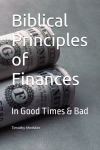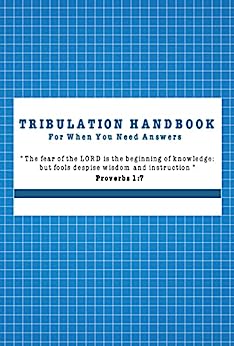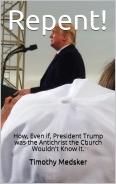Origins of Christ ‘mass’ Part Two
by Tim | May 1, 2014 | Holiday |
Origins of Christ ‘mass’ Bible Study — The Christ ‘mass’ Tree
Holiday (Holy Day)
Originally, a religious anniversary; now, a day set apart for exemption from labor or for a formal or informal celebration.
Webster’s University Dictionary Unabridged, 1942
As with the origins of most all religiously celebrated ‘Christian’ holy days there are often different historical backgrounds to traditions that often were mixed with various cultures to form what is now known. Pagan nations often kept many of their pagan traditions and ‘christianized’ them while the Roman Catholic Church (RCC) heavily participated in continuing a good majority of such traditions while giving so-called Christian themes to them. This bible study is going to take an in-depth look at the origin of the “christmas tree”.
Every year people all over the world purchase a tree, decorate it with lights and often an angel on top, and display this tree as the centerpiece of their living room. What exactly does a tree have to do with the birth of Jesus?
One origin of the tree was ‘an early Roman ritual…to exchange green tree branches on January 1. They believed this would bring them good luck.’1 Another were the Scandinavian’s who worshipped evergreen trees. ‘They believed god-like spirits inhabited them so people brought trees into their homes to please the spirits and seek their blessing.’2
The tree entered America through the German immigrants. The popular origin of the “christmas tree” stems from a German, Martin Luther (1483-1546). ‘One clear, brisk Christmas Eve, Martin Luther was walking home under the star-studded sky. It was so wonderful. As he walked he tried to think how he could catch the beauty of the eve and bring it home to his children. Suddenly he thought of a large evergreen tree gleaming with candles. He proceeded to find a tree, cut it down and take it home to decorate it. His children were delighted. Hence we have the beginnings of our modern “Christmas Tree” with all the trimmings.’3 However with a little bit of research we can easily prove that Martin Luther was not the only one to ever think of putting a tree in the home with candles on it. In fact, as we will soon learn, this stems from a much older tradition. Take a look at your Christ ‘mass’ lights, they still resemble miniature candles.
In Jeremiah 10:3-4 we learn that the worship of trees is spoken against, long before the birth of Jesus Christ, our Lord. “For the customs of the people are vain; for one cuts a tree out of the forest with the ax, the work of the hands of the craftsman. They make it beautiful with silver and gold they fasten it with nails and hammers, so that it will not totter.”4
Modern books often leave out much of the historical facts regarding the origins of Christ ‘mass’ and the traditions that go along with it. In order to make this bible study the author has sought various sources of information that was obtained largely through the Chicagoland area libraries where old books may still be found and cited. The following information comes from such a book.
‘A Scandinavian myth of great antiquity speaks of a “service-tree” sprung from the blood-drenched soil where two lovers had been killed by violence. At certain nights in the Christmas season mysterious lights were seen flaming in its branches that no wind could extinguish.’5
‘The French have their legend as well. In a romance of the thirteenth century the hero finds a gigantic tree whose branches are covered with burning candles, some standing erect, the others upside down, and on the top the vision of a child with a halo around his curly head. The knight asked the Pope for an explanation, who declared that the tree undoubtedly represented mankind, the child the Saviour, and the candles good and bad human beings.’6
‘Wolfram von Eschenbach, the famous minstrel, sings of a prevailing custom of welcoming guests with branches ornamented with burning candles.’7
As stated before Martin Luther was certainly not the first to come up with the idea of having a decorated tree. ‘An older German legend makes St. Winfrid the inventor of the idea. In the midst of a crowd of converts he hewed down a giant oak which had formerly been the object of their Druidic worship. “Then the sole wonder in Winfrid’s life came to pass. For as the bright blade circled above his head, and the flakes of wood flew from the deepening gash in the body of the tree, a whirling wind passed over the forest. It gripped the oak from its foundations. Backward it fell like a tower, groaning as it split asunder in four pieces. But just behind it, and unharmed by the ruin, stood a young fir-tree, pointing a green spire towards the stars. Winfrid let the axe drop, and turned to speak to the people. ‘This little tree, a young child of the forest, shall be your holy tree to-night. It is wood of peace, for your houses are built of the fir. It is the sign of an endless life, for it leaves are ever green. See how it points upward to heaven. Let this be called the tree of the Christ-child; gather about it, not in the wild wood, but in your own homes; there it will shelter no deeds of blood, but loving gifts and rites of kindness.’”’8
The tree ‘…may have some remote connection with the great tree Yggdrasil of Norse mythology. It may be a revival of the pine-trees in the Roman Saturnalia which were decorated with images of Bacchus, as described by Virgil in the Georgics:’9
In jolly hymns they praise the god of wine,
Whose earthen images adorn the pine,
And these are hung on high in honor of the vine.
(Dryden’s translation.)
He continues ‘”Two other suggestions are offered by Sir George Birdswood in the Asiatic Quarterly Review (vol. i. pp. 19-20) “It has been explained”, he says, “as being derived from the ancient Egyptian practice of decking houses at the time of the winter solstice with branches of the date-palm, the symbol of life triumphant over death, and therefore of perennial life in the renewal of each bounteous year; and the supporters of tehse suggestions point to the fact that pyramids of green paper, covered all over with wreaths and festoons of flowers and strings of sweetmeats, are often substituted in Germany for the Christmas tree. But similar pyramids, together with similar trees, the latter usually altogether artificial, and often constructed of the costliest materials, even of gems and gold, are carried about at marriage ceremonies in India and at many festivals, such as the Huli, or annual festival of the vernal equinox. These pyramids represent Mount Meru and the earth, and the trees, the Kalpadrama, or Tree of Ages, and the fragrant Parijata, the tree of every perfect gift, which grew on the slopes of Mount Meru; and in their inlarged sense they symbolize the splendor of the outstretched heavens, as of a tree, laden with golden fruit, deep-rooted in the earth. Both pyramids and trees are also phallic emblems of life, individual, terrestrial, and celestial. Therefore, if a relationship exists between the Egyptian practice of decking houses at the winter solstice with branches of the date-palm, and the German and English customs of using gift-bearing and brilliantly illuminated evergreen trees, which are nearly always firs, as a Christmas decoration, it is most probably due to collateral rather than to direct descent; and this is indicated by the Egyptians having regarded the date-palm not only as an emblem of immortality, but also of starlit firmament.’”10
‘The suggestion as to collateral rather than direct descent is eminently plausible. The legends already quoted show that even in medieval times there was a tradition of holiness investing an illuminated tree which made it mystically appropriate to the season of the winter solstice…about this time the Jews celebrated their feats of Chanuckah (q. v.), or Lights, also known as the Feast of the Dedication. Lighted candles are a feature of the Jewish feast. Innumerable lights must therefore have been twinkling in every Jewish house in Bethlehem and Nazareth at about the reputed time of the Saviour’s birth. It is worthy of note that the German name for Christmas is Weihnacht, the Night of Dedication, and that the Greeks call Christmas the Feast of Lights. These vague traditions margining together finally led to the permanent establishment of the Christmas-tree. As a regular institution, however, it can be traced back only to the sixteenth century. During the Middle Ages it suddenly appears in Strassburg. A valuable authentic manuscript of 1608, by a Strassburg burgher, now in a private collection in Friedberg, Hesse, describes the tree as a feature of the Christmas season. The manuscript of a book entitled “The Milk of Catechism,” by the Strassburg theologian Dannbauer, mentions the same subject in a similar way. For two hundred years the fashion maintained itself along the Rhine, when suddenly, at the beginning of this century, itspread all over Germany, and fifty years later had conquered Christendom.’ 11
‘The first description of a Christmas-tree in modern literature is to be found in “The Nut-Cracker,” a fairy-tale by Fouque and Hofffmann.’12
‘In 1830 the Christmas-tree was introduced by Queen Caroline into Munich. At the same time it beat its path through Bohemia into Hungary, where it became fashionable among the Magyar aristocracy. In 1840 the Duchess Helena of Orleans, brought it to the Tuileries. Empress Eugenie also patronized it, but the middle class it was still considered an intruder of Alsatian origin. In 1860 the German residents of Paris could procure a Christmas-tree only with the greatest difficulty. However, nine years later the trees were regularly sold in the market.’13 Furthermore, ‘It was the marriage of Queen Victoria to a German prince which led to the introduction of the German custom into England.’14
A more modern source concurs ‘Baal-Berith (the Babylonian Tammuz) was symbolized as an evergreen, or immortal tree. The Christmas tree, then decked with gold (diety), and silver (unlimited provision), represents the deified, reincarnation life of Nimrod, which has sprung forth from the dead tree stump.’15 From yet another online source the following information is cited, ‘Since the earliest of times, trees, especially green evergreens, were worshipped by the pagans. To them it represented life and freshness. Since it was EVER green, it always had life. The trees were worshipped as symbols as symbols of life, fertility, sexual potency and reproduction (emphasis in original).’16
Referring back to another old source we turn to Alexander Hislop. He has this to say about the origin of the Christ ‘mass’ tree, ‘The Christmas tree, now so common amoung us, was equally common in PAGAN ROME AND PAGAN EGYPT (emphasis in original). In Egypt that tree was the palm tree; in Rome it was the fir; the palm tree denoting the Pagan Messiah as Baal-Tamar the fir referring to him as Ball-Berith. The mother of Adonis, the sun god and great mediatorial divinity, was mystically said to have been changed into a TREE, and when in that state to have brought forth her divine son. If the mother was a tree, the son must have been recognized as the ‘Man the branch.’ And this entirely accounts for putting the Yule Log into the fire on Christmas-eve, and the appearance of the Christmas tree the next morning. The Christmas tree, as has been stated, was generally at Rome a different tree, even the fir; but the very same idea as was implied in the palm-tree was implied in the Christmas fir; for that covertly symbolized the new-born God as BAAL-BERITH, ‘Lord of the Covenant,’ and thus shadowed forth the perpetuity and everlasting nature of his power, now that after having fallen before his enemies, he has risen triumphant over them all. Therefore, the 25th of December, the day that was observed at Rome as the day when the victorious god appeared on eath, was held as the Natalis invicti solis, ‘The birthday of the Unconquerable Sun. Now the Yule Log is the dead stock of Nimrod, deified as the sun god, but cut down by his enemies; the Christmas tree is Nimrod redivivus – the slain god comes to life again.’17
Please note here that in different cultures the same pagan gods were often worshipped with different names. Once again a modern source will be cited for the final time. ‘The first decorating of an evergreen tree was done by pagans in honor of their god Adonis, who after being slain was brought to life by the serpent Aesculapius. The representation of this slain god was a dead stump of a tree. Around this stump coiled the snake Aesculapius symbol of life restoring. And lo – from the roots of the dead tree comes forth another and different tree – an evergreen tree symbolic to pagans of a god who cannot die! In Egypt this god was worshipped in a palm tree as Baal-Tamar. The fir tree was worshipped in Rome as the same new born god as Baal-Berith, who was restored to life by the same serpent, and a feast was held in honor of him on December 25th called the “Birthday of the unconquered Sun.” Now in Babylon’s “Mystery” system of idol worship the sun was called “Baal,”…so when Tammuz the son of the queen of heaven was worshiped as God he was also reverenced by the name of Baal. ….the Roman Catholic Church has brought down through the ages to us, the paganism of Baal or the worship of the sun, mingled with the worship of Aesculapius the serpent.’18
Once again referring back to a few more pieces of information contained in old books we will finish up with the origin of the Christ ‘mass’ tree. As with the lights that are put on the tree this source sheds some light, no pun intended, on the situation, ‘The lighting of it with candles undoubtedly grew out of the belief that candles appeared miraculously on various trees at the Christmas season.’19 Going back to not only the tree itself but a brief mention of the origins of the green (oft times another color) garland that also accompanies many homes the following information is bestowed, ‘The decking of churches, houses, and shops with evergreens at Christmas, springs from a period far anterior to the revelation of Christianity, and seems proximately to be derived from the customs prevalent during the Saturnalia of the inhabitants of Rome ornamenting their temples and dwelling with green boughs. From this latter circumstance, we find several early ecclesiastical councils prohibiting the members of the church to imitate the pagans in thus ornamenting their houses. But in process of time, the pagan custom was like others of a similar origin, introduced into and incorporated with the ceremonies of the church itself. The sanction of our Saviour likewise came to be pleaded for the practice, he having entered Jerusalem in triumph amid the shouts of the people, who strewed palm-branches in his way. It is evident that the use of flowers and green boughs as a means of decoration, is almost instinctive in human nature, and we accordingly find scarcely any nation, civilized or savage, with which it has not become more or less familiar. The Jews employed it in their Feast of Tabernacles, in the month of September; the ancient Druids and other Celtic nations hung up the mistletoes and green branches of different kinds over their doors to propitiate the woodland spirits; and a similar usage prevailed, as we have seen, in Rome.’ Continuing, ‘Stow, that invaluable chronicler, informs us in his Survey of London, that “against the feast of Christmas every man’s house, as also their parish churches, were decked with holme (the evergreen oak), ivy, bayes, and whatsoever the season of year afforded to be green. The conduits and standards in the streets were likewise garnished: among the which I read, that in the year 1444, by tempest of thunder and lightning, towards the morning of Candlemas-day, at the Leadenhall, in Cornhill, a standard of tree, being set up in the midst of the pavement, fast in the ground, nailed full of holme and ivie, for disport of Christmass to the people, was torne up and cast downe by the malignant spirit (as was thought), and the stones of the pavement all about were cast in the streets, and into divers houses, so that the people were sore aghast at the great tempest.”’20
Now that an in-depth look at the various origins of the Christ ‘mass’ tree have been stated the following question must be asked. Which of the origins had a Christian origin? Well the answer is none, in fact the origin of the Christ ‘mass’ tree predates the birth of Jesus. Please note that this study only covers one aspect of one holiday. So what do Christians do in regards to this pagan practice? From here let’s explore the Holy Scriptures and see what God has to say regarding pagan practices.
“And it came to pass, as soon as Gideon was dead, that the children of Israel turned back and committed adultery with the Baals, and established Baal-Berith as their god.” Judges 8:33
“But the path of the just is as the brightness of dawn, that keeps getting brighter until it is fully daytime. The way of the wicked is darkness; they do not know at what they stumble.” Proverbs 4:18-19
“For we must all appear before the judgment seat of Christ, that each one may receive the things done in the body, according to what he has done whether good or bad.” 2 Corinthians 5:10
“You shall not follow the majority in doing evil…” Exodus 23:2a
“You shall burn the graven images of their gods with fire; you shall not covet the silver or gold that is on them, nor take it for yourselves, lest you be snared by it; for it is an abomination to Jehovah your God. Nor shall you bring an abomination into your house, lest you be utterly destroyed like it. You shall detest it unto abomination and loathe it unto abhorrence, for it is a prohibited thing.” Deuteronomy 7:25-26
“take heed to yourself that you are not ensnared to follow them, after they are destroyed before you, and that you do not inquire after their gods, saying, How did these nations serve their gods? I also will do likewise. You shall not do so unto Jehovah your God; for everything that is an abomination to Jehovah which He has hated, they have done unto their gods; for they burn even their sons and daughters in the fire unto their gods.” Deuteronomy 12:30-31
“To whom then will you compare the Mighty God? Or what likeness will you compare to Him?” Isaiah 40:18
“Whoever is too poor for such an offering chooses a tree that will not rot; he looks for a skillful workman to prepare a graven image that will not totter.: Isaiah 40:20
“To whom then will you compare Me, or with who am I equal? Says the Holy One.” Isaiah 40:25
A reminder that nowhere in the Word of God are we told to remember the birth of our Lord Jesus Christ. We are commanded to remember His death, however. (Luke 22:18-19; 1 Corinthians 11:23-26)
This bible study will close with the following verses.
“And what agreement has Christ with Belial?” 2 Corinthians 6:15a
“But test all things; hold fast what is good. Abstain from every form of evil.” 2 Thessalonians 5:21-22
“Come out of her, my people, so that you not share in her sins, and so you not receive of her plagues.” Revelation 18:4b
A final thought:
“For preventing disorders, arising in several places within this jurisdiction by reason of some still observing such festivals as were superstitiously kept in other communities, to the great dishonor of God and offense of others: it is therefore ordered by this court and the authority thereof that whosoever shall be found observing any such day as Christmas or the like, either by forbearing of labor, feasting, or any other way, upon any such account as aforesaid, every such person so offending shall pay for every such offence five shilling as a fine to the county.”
From the records of the General Court,
Massachusetts Bay Colony
May 11, 1659
References:
-
Logos Communication Consortium brochure
-
Ibid.
-
Ibid.
-
Holy Scriptures, VW, 2006
-
Curiosities of Popular Customs, Walsh, 1897
-
Ibid.
-
Ibid.
-
Ibid.
-
Ibid.
-
Ibid.
-
Ibid.
-
Ibid.
-
Ibid.
-
Ibid.
-
-
-
The Two Babylons, Hislop, 1919
-
-
Source Unknown – Unfortunately the copies made from the original book do not include the title of the book or the author.
-
The Book of Days, Chambers, 1879
All scripture is taken from the VW 2006 edition of the Holy Scriptures. www.a-voice.org







